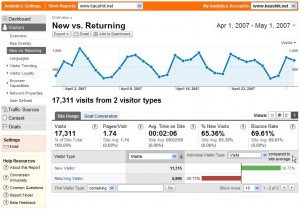How to Integrate Social Media with your Lead Tracking
![]() To maximize your online presence, it’s important to make sure you’ve got all of your social media channels covered and that you’re regularly posting to each one. Keeping track of posts on Facebook, Twitter, LinkedIn, etc. can be a full-time job on its own. Save time and employee resources by letting marketing automation help you integrate social media with your lead tracking practices.
To maximize your online presence, it’s important to make sure you’ve got all of your social media channels covered and that you’re regularly posting to each one. Keeping track of posts on Facebook, Twitter, LinkedIn, etc. can be a full-time job on its own. Save time and employee resources by letting marketing automation help you integrate social media with your lead tracking practices.
By tracking all of your marketing activity, including website traffic, targeted email opens, and clicks via social media campaigns, your marketing team can get a better understanding of which marketing channels are most effective and produce the highest quality leads. When you integrate social media with your lead tracking system that is already in place, you have a greater chance of generating quality leads that are more likely to convert.
With Lead Liaison’s social media solution, you have the ability to keep track of who is clicking which links, how often they’re doing so, and which of those prospects end up converting—all in one place. Using lead tracking software alongside social media campaigns allows you to track and measure real-time visitor activity and clearly see where site traffic is coming from to determine which of your marketing efforts are most successful in relation to your customer base.
Here are some capabilities to take advantage of when you integrate your social media with your lead tracking:
- Scheduling: Create a predefined schedule for your social media posts. Spend a few hours Monday morning (or whenever you prefer) creating all the posts you’ll need for the week, and set up a time and day to send each one out. You can even create “canned messages,” which are multi-use messages that you don’t have to worry about retyping each time.
- Nurturing: If you integrate social media with your lead tracking, you have the ability to better understand your prospects’ needs. This empowers you to send out more personalized and direct messages that your prospects are more likely to respond to. Tracking leads in this way also helps your team to manage who needs to be nurtured and who is ready to be given to sales and move on to the next level.
- Enrich prospects’ profiles: Joining lead tracking practices with your social media campaigns also helps manage and update the prospects that are already in your pipeline, lending to a better understanding of their online activity, and can ultimately suggest their buying readiness. Keep track of shares and clicks and add that information to their profile in your system.
Most importantly, having that connection between tracking your leads efficiently and managing your social media marketing allows you to communicate with prospects more directly and effectively, leading to a higher conversion rate. Take advantage of your marketing automation system and integrate social media with your lead tracking.




